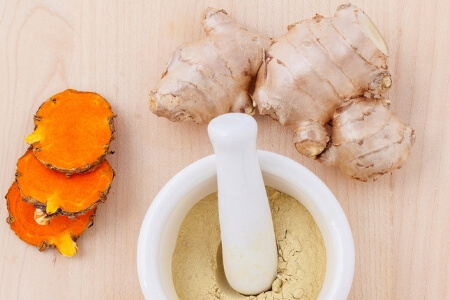- Home
- Food & Diets
- Migraines and Diet
Magnesium Deficient = More Migraine Attacks
Science confirms this hidden trigger.
Get all 7 forms your body actually absorbs in one bottle.
🎁Save 10% with my code!
Magnesium Deficient = More Migraine Attacks
Science confirms this hidden trigger. Get all 7 forms your body actually absorbs in one bottle +
🎁Save 10% with my code!
Migraines And Diet: Is Ketogenic Just Another Fad?
The link between migraines and diet are well established. If you’ve had a few attacks, you can probably recognize certain foods that either trigger an attack or make an episode much worse.
Avoiding your food triggers can quickly become a lifestyle choice that is vital to better managing your attacks.
There's been a lot of research into diet and how what we eat, and what we digest, affects our body. The theories are constantly evolving, providing us with new alternatives all the time. In fact, there have been several studies now finding that the ketogenic diet can prevent migraines for some.
So... no. The keto diet is not just a fad.
But, it's not a one size fits all solution either.
My #1 Choice in Magnesium Supplementation
Have you heard of the ketogenic diet?
The ketogenic diet is neuroprotective, and it’s had beneficial effects for some migraine patients... this could mean you too! It has some very interesting links to migraine causes that encouraged me to experiment.
My doctor recommended I look at Patricia Daly’s website which is packed full of fabulous information. She is a nutritionist who used the ketogenic diet to cure her own form of rare eye cancer and now helps others.
I want to say cure, but... we all know there are no guarantees when it comes to an illness like cancer. Though I must say, she uses the word cure.
I bought her first e-book once I saw some of the delicious recipes. Plus, she has a daily menu plan for two weeks: breakfast, lunch, dinner and snacks. Let me warn you... it's a lot of cooking.
I thought as far as migraines and diet goes; this would be simple compared to doing it all myself like I have done in the past.
Neuroprotective means serving to protect neurons from injury or degeneration.
~ merriam-webster.com

 Work up slowly. Start with ½ teaspoon per day of MCT oil for one week. After a month or so, when you reach 1 tablespoon, wait 2 weeks before increasing to 2 tablespoons per day which is the ideal dose. Migraines and Diet @migrainesavvy
Work up slowly. Start with ½ teaspoon per day of MCT oil for one week. After a month or so, when you reach 1 tablespoon, wait 2 weeks before increasing to 2 tablespoons per day which is the ideal dose. Migraines and Diet @migrainesavvyRetrain your body to burn fat instead of glucose (sugar)
Kids Health.org defines Ketones as "glucose (a type of sugar) is the body's main energy source. But when the body can't use glucose for energy, it uses fat instead. When fats are broken down for energy, chemicals called ketones appear in the blood and urine." [1]
The ketogenic diets main goal is to change your metabolism to burn fat instead of glucose (or sugar).
You may be familiar with the term ketosis. Ketosis is a normal metabolic process where the body burns ketones to make energy instead of using sugar or glucose to make energy.
Ketosis helps us adapt to times when there is a food shortage. Fasting is one way to look at it.
Many medical conditions are using this to diet to manage and treat Diabetes, Autism, Epilepsy, Alzheimer's, Cancer and others.
The key thing to remember here is that it is anti-inflammatory and neuroprotective. As a migraine sufferer you need to protect your nerve cells as they get overstimulated and over excited and fire off.
I recently listened to a webinar where Mrs. Daly talked about alternative cancer cells energy pathways and how the liver converts amino acids into glucose. A lot of it was over my head, but I found it incredibly interesting.
The main take away was that you want low carbohydrates, high fat (good fat), and moderate protein intake.
So you can see the carbohydrate section alone in the ketogenic diet is extremely different from the standard diet. As an athlete Patricia ate high carbs. And western cultures eat high carbs. I know I sure did before I studied nutrition.
On a positive note, all these years of experimenting with migraines and diet have made me stay healthy.
The ketogenic diet means you can eat:
- natural protein like chicken, fish, beef, and pork (including bacon and sausage);
- nuts and seeds;
- eggs, butter and cream (patè);
- fresh, leafy green vegetables;
- good natural fats like: avocado, extra virgin olive oil, or coconut oil.
No processed foods. No fruit except for berries like strawberries.
My results - after three months of doing this diet my husband lost about four kilos (nine pounds) and I gained much more energy. My migraines reduced in intensity but not frequency, yet!
Update... after three months I got a vestibular migraine attack which lasted three months and ended my experiment with the ketogenic diet. Sadly.
This was my first exploration with migraines and diet around nerve protection... but I have a whole section on food, here's the link - Safe Migraine Food And Some New Ideas.
 Migraines and diet... the Ketogenic diet.
Migraines and diet... the Ketogenic diet.The ketogenic diet mimics fasting
In the 1920’s doctors observed that intractable epileptic seizures reduced during a fast. This was with just water!
So they were keen to develop a diet that mimicked fasting. So the Ketogenic diet was used primary as an effective tool with managing epilepsy until the 1930’s when drugs were developed.
Doctors that deal with neurological diseases like: Parkinson’s, Alzheimer’s and Polycystic ovary syndrome are now all looking at this diet to test its effectiveness.
Patricia used it to cure her own rare form of eye cancer. She says that reducing carbohydrate intake to under 50 grams a day, reduces the hypoglycemic reaction. By lowering blood glucose to avoid spikes, you limit the fuel source for cancer cells.
Using high fat foods like organic coconut oil and avocado, provides an excellent energy source for healthy cells.
Migraines and diet is one thing we can control. We can control what we choose to eat. I think all of this is important for the additional health benefits as well.
Dr. Mercola says ketones are brain food.
"Medium-chain triglycerides (MCT) are fats that are not processed by your body in the same manner as long-chain triglycerides. Normally, a fat taken into your body must be mixed with bile released from your gallbladder before it can be broken down in your digestive system.
But medium-chain triglycerides go directly to your liver, which naturally converts the oil into ketones, bypassing the bile entirely. Your liver then immediately releases the ketones into your bloodstream where they are transported to your brain to be used as fuel." [2]
Other benefits to experimenting with the ketogenic diet...
So, what's the link between migraines and diet... the keto diet exactly?
The ketogenic diet has predictable metabolic changes. It lowers glucose and insulin and so many other things. But most importantly for you as a migraine sufferer... it reduces inflammation and protects nerve cells against damage, degeneration, or impairment of function.
"Anti-seizure medications originally intended for those with epilepsy are often prescribed to migraine sufferers. These medications typically block glutamate (a neurotransmitter), high concentrations of which are often found in both migraine and epilepsy patients. As ketones block high concentrations of glutamate, a ketogenic diet can have a beneficial effect for migraine sufferers." [5]
Patricia Daly advocates that you can also: improve the quality of life, regain energy, get better sleep, have clearer skin, and improve your digestion. [4]
The ketogenic diet = better sleep, clearer skin, weight loss and more. More energy... improved digestion... fewer migraines...
So, there are other benefits to experimenting with migraines and diet.
Migraines and diet - a word of caution
In your desperation for pain relief, you might be tempted to try things that may not be in your best interest. So please run new experiments past your doctor or primary care physician.
Click here to read Who Should Not Follow A Ketogenic Diet.
The ketogenic diet does have contraindications with some preexisting health conditions. Especially kidney or heart conditions. And for me, a dysfunctional gallbladder.
The other confusing thing is that most doctors might think you are entering the ketosis danger zone, meaning ketoacidosis, which is not the same as nutritional ketosis.
Ketoacidosis is a huge problem for individuals with diabetes, or anyone unable to make or process insulin correctly. These are two different things. So gather your information and ...
Check with your doctor first if you have other health conditions that may contraindicate this method.
My doctor warned me about Keto flu! You might feel a bit worse before you get better. I never did actually, just a little more tired than usual. Luckily I could just cook, rest and eat for my first month. I was very keen to test the potential for migraine reduction.
Be sure to balance your electrolytes.
If you’re considering this diet, it is important to monitor your electrolyte intake, "as your body will flush out excess water and electrolytes when it uses up its glycogen stores.
Consuming adequate amounts of sodium, potassium, and magnesium will keep you from feeling tired, having achy muscles, and suffering from additional headaches." Taking some additional magnesium could help you avoid migraine attacks. [3]
Ketogenic foods high in magnesium are:
- avocados (can be a trigger)
- spinach
- kale
- almonds
My favorite magnesium supplement for stress, sleep, and migraine prevention.
I would really only do this diet under medical supervision... that’s my suggestion. I have a device that measures my ketones. It’s similar to the one that measures blood sugar for diabetics, so check with your physician should you wish to start on this food experiment.
Eat a fulfilling breakfast for energy throughout the day
75-85% of fat sounds like a mountain of fat! But it's not really.
Coconut oil blends into anything plus it has a higher heat limit for cooking.
Intermittent fasting is another way to help the body go into deeper ketosis – Patricia fasts for 18 hours.
She just has two meals and eats at brunch and then 6 pm.
This is not where you start.
In fact I have never eaten so much food in my life.
Snacking is encouraged! Smaller meals and not too much fat in one go will give your system time to adapt to this new way of eating.
Here are some examples of her recipes:
- Egg frittata mixed with leftover vegetables – or just scrambled all together.
- Kale shake – (steamed) mixed with coconut cream, apple cider vinegar and the other nutritious things.
- Chia pudding – you can make in a blender.
- Homemade bread with butter (she has lots of bread and cracker recipes).
- Keto granola bars.
- Bulletproof coffee (MCT oil, and butter into the coffee). This has become my favorite winter drink using almond milk. I don't use coffee, just three drops of stevia to sweeten it up. NICE!
P.S. I'm not an affiliate... I just loved her cookbooks and meal plans.
Use leftovers for lunch
Keep it simple.
You can use leftovers from dinner last night in bone broth. Just put it all into your bone broth with spices and herbs to make a nice soup or casserole type meal. Click here for my bone broth recipe.
In the summer have green leafy salads with sardines and homemade mayo. You can create amazing salad dressings that make the meal.
Keto friendly soups in winter.
Sandwich with keto bread, lettuce and gherkins, patè, etc.
She does a Mason jar lunch and just puts the dressing at the bottom and then the ingredients in layers at the top. When you are ready to eat shake it and turn it upside down. Too easy!
Start your mini fast right after dinner
Patricia Daly says that the best time to eat is at least 3 hours before bedtime.
Start your mini-fast of 12 hours from dinner to breakfast (and slowly increase the gap if you choose to).
The benefits of fasting: lowers growth factors, switches on DNA repairs genes and regenerates immune cells.
Some good ideas are:
- Courgette spaghetti with pesto or carbonara sauce... yummo!
- Duck legs (in oven for 15-20 minutes) good fat content and not so much protein as chicken.
- Pizza – yes pizza - with cauliflower crust. With oily fish like salmon or sardines for topping.
- Portobello mushrooms, big ones, you can top them like a mini pizza!
If you like and tolerate dairy, you can put a little on top of pizza's or veggies.
WANT HELP WITH FOOD ?
MIGRAINE PAIN MANAGEMENT COURSE
There's an 8-week food experiment in my Migraine Pain Management Course. The first module is free >> click here for more
This is not just a fad, it's about lifestyle choices
This is not just about food, it is about choosing a healthy lifestyle to stop migraines before they start. Reducing stress, relaxing and enjoying life is really important. So never beat yourself up for not getting it quite right.
Migraines and diet have been, and continue to be a very big challenge for me. But at the same time fun. I love finding yummy new things I can eat that are really healthy and migraine safe.
Here are a few more tips:
- I don’t eat dairy, if I can help it, but having some is a good source of fat and calcium. There are coconut oil products now - cheese, aminos, yogurt that are good substitutes for dairy.
- Fermenting beetroot and carrot significantly reduces the carbohydrate content.
- Celeriac is low in carbohydrates. I never cooked with it until the recipe for Shepherd’s pie in the ebook came up.
So my personal experimenting with migraines and diet continues in the pursuit of migraine elimination. How about you?
Will you try this way of eating? Remember to hydrate.
My #1 Choice in Magnesium Supplementation
WANT MORE TIPS? Subscribe to my newsletter and follow along on Facebook and Pinterest for all of the latest updates.
FOOD & DIETS Related Articles
MIGRAINE SAFE RECIPES Related Articles
How to be more MIGRAINE SAVVY right now...
Resources for Migraines and Diet:
1. KidsHealth.Org (2018) Definition of Ketones. Available [online] at: http://kidshealth.org/en/parents/ketones.html?ref=search&WT.ac=msh-p-dtop-en-search-clk
2. Dr. Mercola (2010) Coconut Oil: Four Tablespoons of This "Brain Food" May Prevent Alzheimer's. Available [online] at: https://articles.mercola.com/sites/articles/archive/2010/12/13/can-this-natural-food-cure-or-prevent-alzheimers.aspx
3. Amos, Julia (2017) Can a Ketogenic Diet Help Prevent Migraines? Available [online] at: https://migraineagain.com/can-a-ketogenic-diet-prevent-migraines/
4. Daly, Patricia (2016) Practical Keto Meal Plans. Available [online] at: https://patriciadaly.com/ebooks-2/
5. Migraine Relief Center (2016) Ketogenic Diets and Migraines: What You Need To Know. Available [online] at: https://blog.themigrainereliefcenter.com/ketogenic-diets-and-migraines-what-you-need-to-know






















